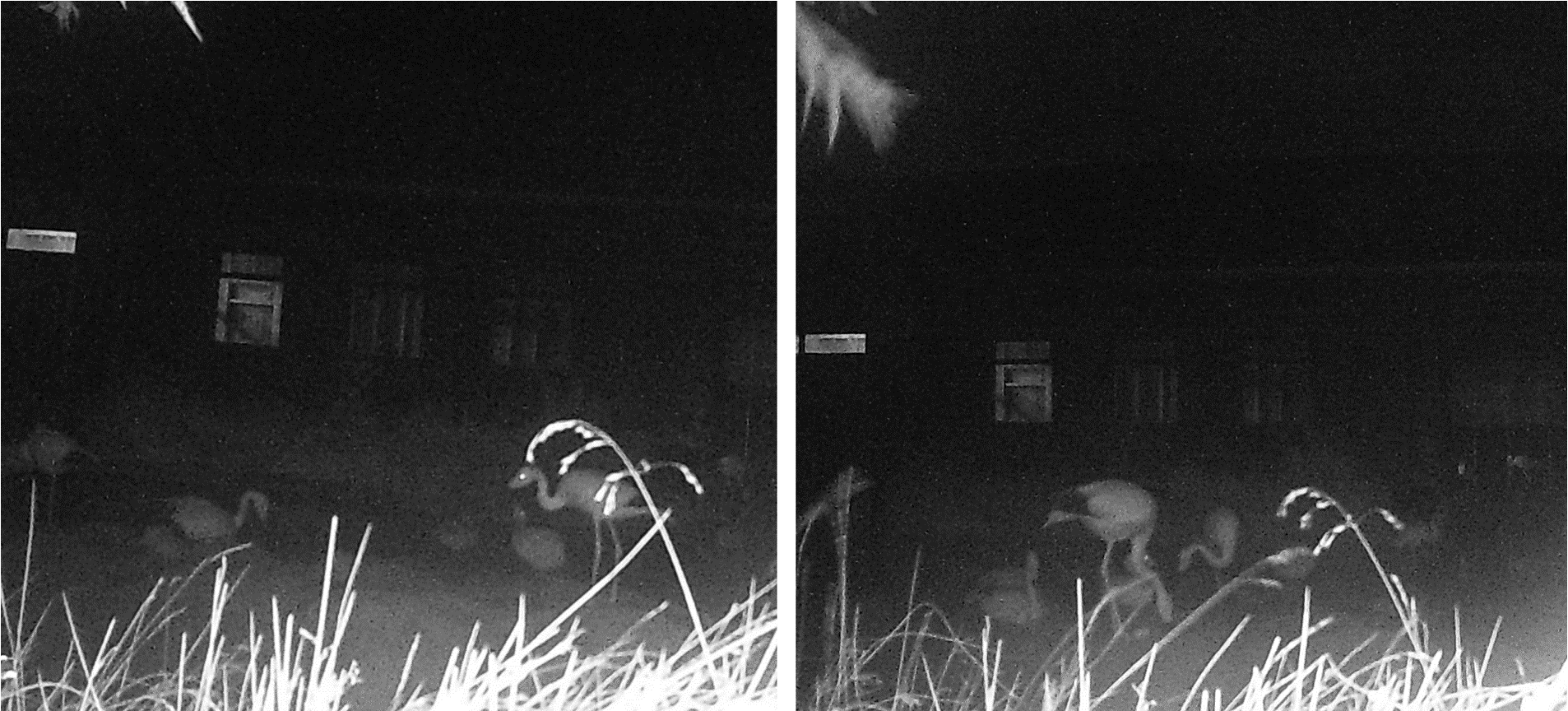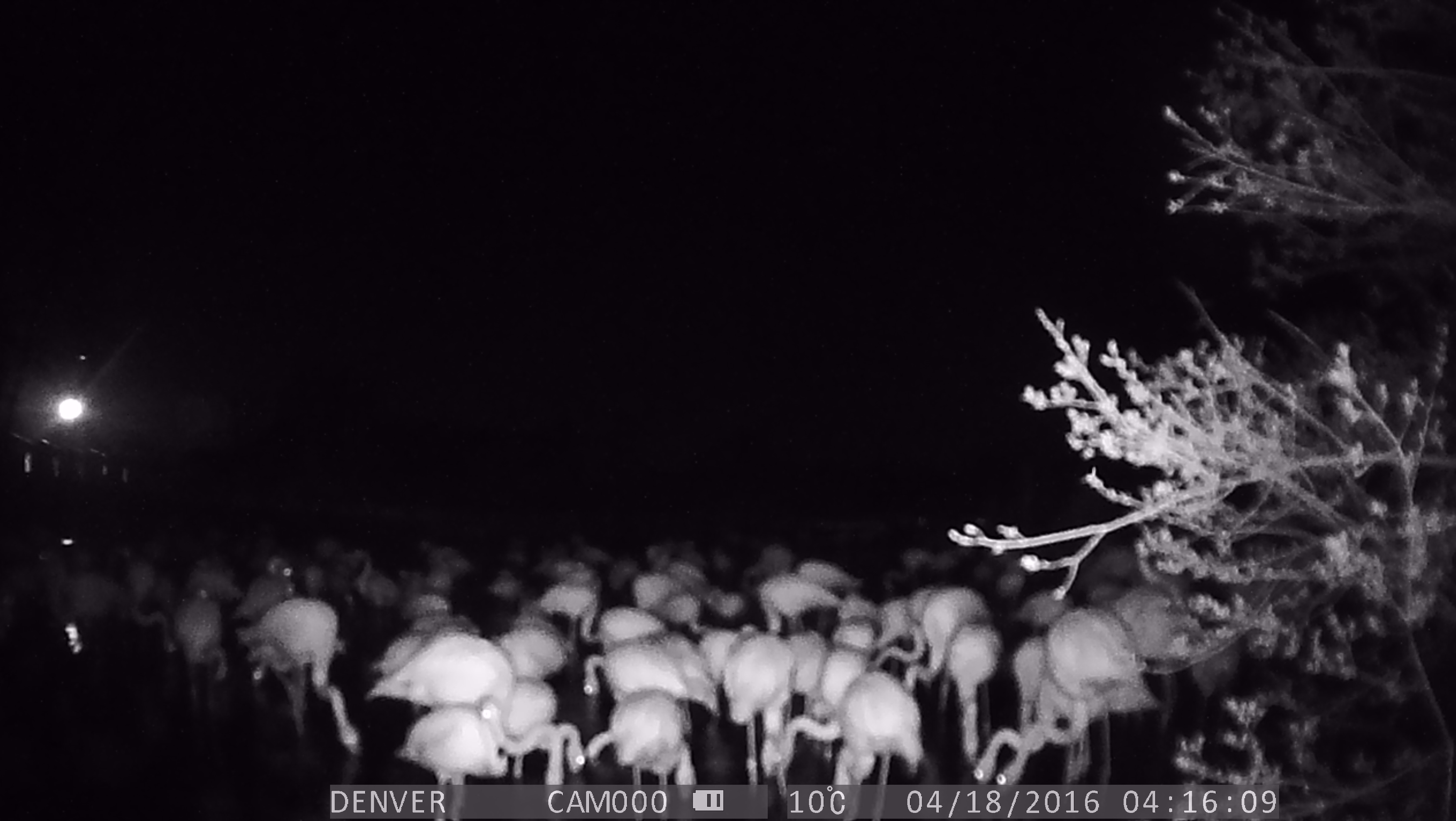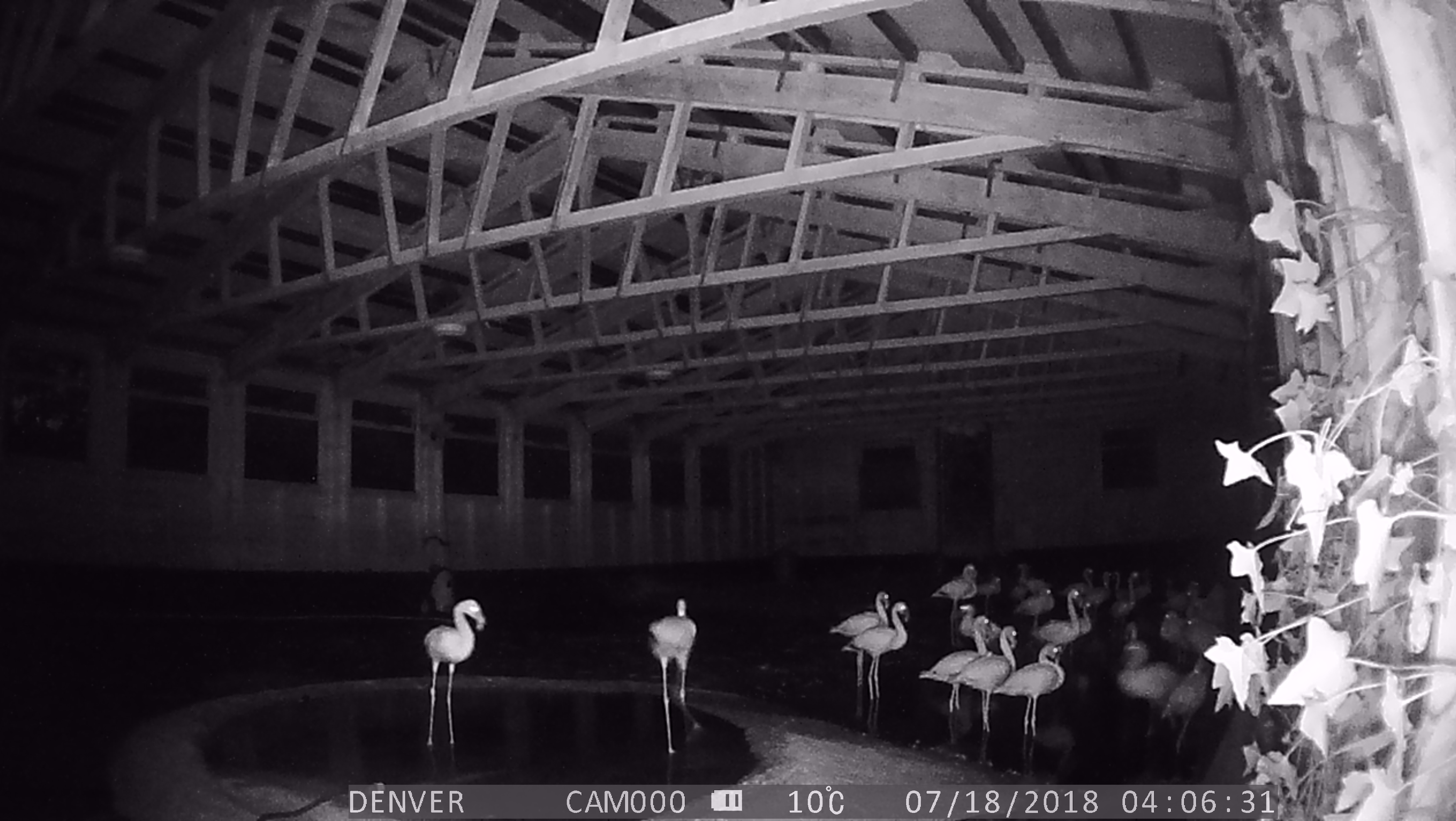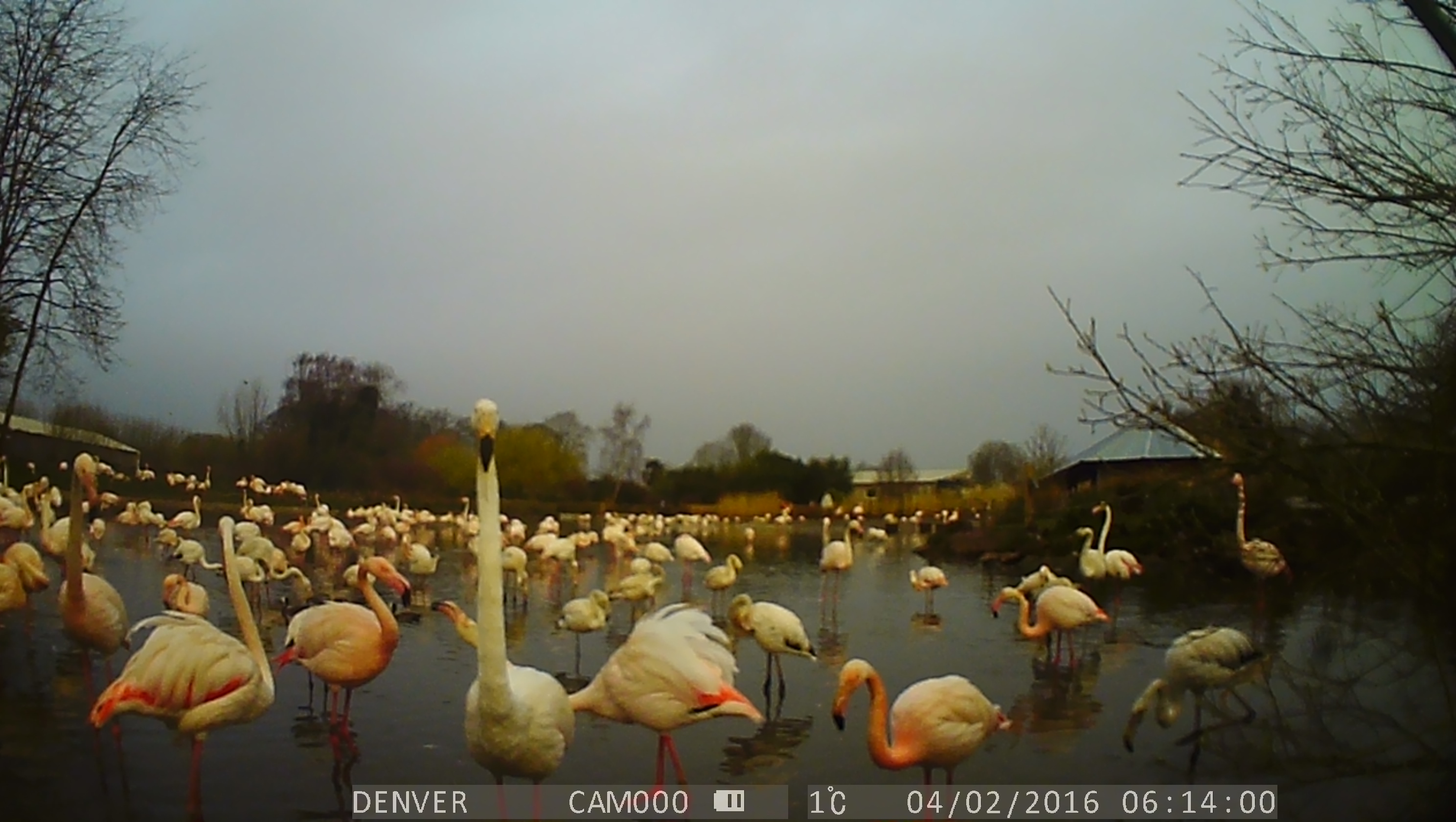Gold-winning flamingos!
The flamingo science at WWT Slimbridge has won a Gold Award in the research category at the 2019 BIAZA Awards.
It’s been an exciting time for the flamingo research at WWT Slimbridge, with new projects starting and on-going research being recognised by the wider zoological community. It’s great to announce that WWT Slimbridge won a Gold Award in this year’s BIAZA (the UK and Irish zoo association) awards, in the research category, for the work that we have been doing investigating nocturnal flamingo activity and enclosure usage.
This is the second time that we have won an award for the flamingo research at WWT, back in 2016 we also achieved a Gold Award from BIAZA for our research into the lives of our flamingos; it’s high praise indeed to be able to do this again and it shows the quality of the scientific investigations that can be run with the WWT birds.
The flamingo nocturnal behaviour project began in January 2016 when trail cameras were first installed around the greater flamingo enclosure at WWT Slimbridge, with the aim of measuring what the birds do across a 24-hour time frame. There is evidence that shows wild flamingos to be very active over-night- foraging for food, tending to their young and moving between their preferred wetland environments. The large enclosures at WWT Slimbridge, and the big flocks of birds, help to create a natural situation that is good for us to look at flamingo behaviour in. It’s must easier to record the behaviour of captive flamingos that those out in the field. We wanted to know the answer to the question: “will our collection birds behave in the same way?”
Looking at the greater flamingos showed how they used their space over time- and that areas of the enclosure not commonly used during the day were more likely to be occupied at night. Flamingos were foraging and feeding readily during the late evening and early morning. Mimicking the activity of the wild flamingos that we had read about in the literature. We extended this work to study the lesser flamingos in 2018 and also the behaviour of the foster parent Andean flamingos in July and August of 2018 too. These species too are busy, busy, busy overnight.
Look carefully at the two photos of the Andean flamingos, below. On the left, you can see a foster parent providing crop milk to its chick, and on the right you can see a bird turning its egg. Both photos were taken around midnight.
Flamingos are not related to owls. They do not have any special anatomical features that makes it easier for them to do what they need to do at night rather than in the day. But they will take advantage of beneficial situations that they can exploit. For example, if their prey (brine shrimps, small crustaceans, other aquatic invertebrates) moves up and down in the water at different times of the day, and it happens to be closer to the water’s surface (and therefore easier to collect) then flamingos will feed more at night than in the say. You can see this in the photo below- many birds in the greater flamingo flock are filtering for tasty treats very early in the morning!
Which brings me on to the last reason why flamingos enjoy staying up. When a parent bird is feeding its chick on crop milk, it requires more energy both for itself and to produce the food for its chick. Flamingos have to feed their young directly for several months and this is a lot of work. During the breeding season, parent flamingos will increase the time they spend collecting food- and this means more foraging during the hours of darkness. We have seen this in our Andean flamingos, and you can see this in the photo above- a foster parent tending to a chick in the middle of the night.
Why do we do these projects?
Flamingos are very popular birds in animal collections globally. The work that we do at WWT helps to inform the management of these animals. Showing what birds need in the enclosures that are provided for them. And how they can be great ambassadors for their wild counterparts- telling visitors all about how flamingos have evolved for their wetland habitats and how their behaviours allow them to live in these challenging environments.
Studying the birds at night gives us a complete picture of their lives here at WWT Slimbridge. We are well-aware of what they get up to in the daytime- being a nocturnal “fly on the wall” means we can see what they do when their keepers are not around. The flamingos would likely to be a bit unsure if a human observer was watching them at a time of the day when they were not expecting to see people. Using these remote cameras gives us a view right into the heart of the flock, at a time when we would not normally be around, without causing any distress or upset to the flamingos.
Sometimes, as has happened in past outbreaks of avian ‘flu, our flamingos have had to be housed inside for longer than they would normally be kept in their houses. One of the things we have found out in this nocturnal flamingo research is how much time birds spend in water at night. Therefore, we know that giving flamingos access to pools inside, for bathing and foraging, is important for their well-being. We share these findings with other zoos, so they can see how to best care for their birds at different times of the year and in different situations. In the video below you will see a group of displaying birds, to the left of the shot, we now know when birds are more likely to perform courtship display. This behaviour was more often performed when it was light, rather than over night. We’ve got lots more projects to run and loads more information on our flamingos to share. So hopefully we can repeat this success with science sometime in the future. Until then, I hope you’ve enjoyed reading about our award-winning birds- I’d like to think that they would be chuffed with this too!




